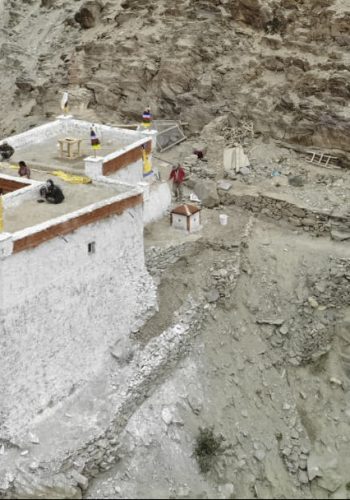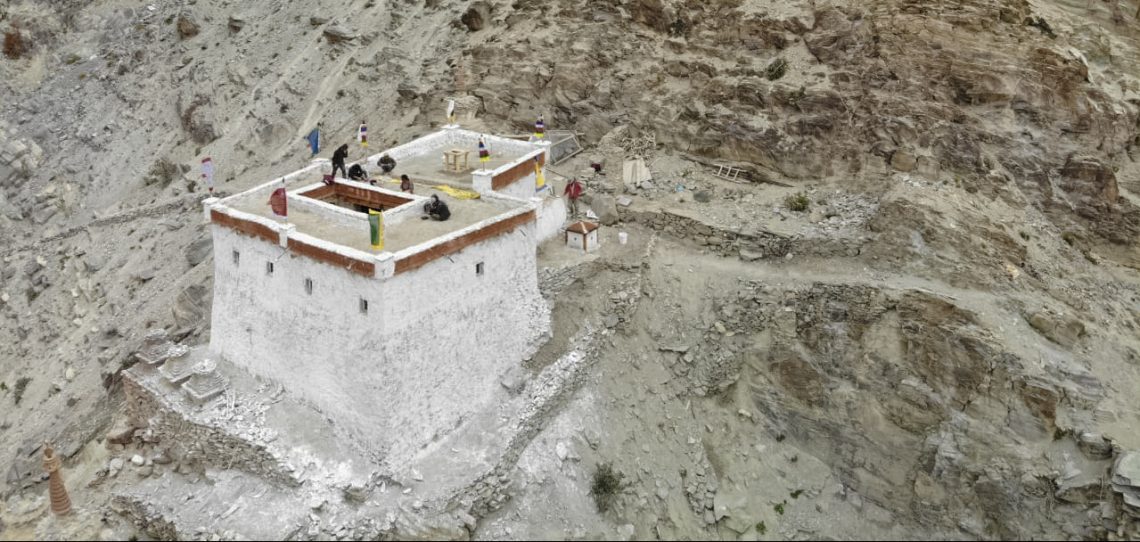
The Ningpa Gonpa of Fotoksar: The story of it’s restoration by the youth
This is an inspiring tale of the restoration of the Ningpa (old) Gonpa in Fotoksar by its youth. Working with the villagers and the Achi Association through the biting cold of winters and the long summer days, it took them 4 years to restore this gonpa as a tribute to their ancestors and as a heritage for the future generations.
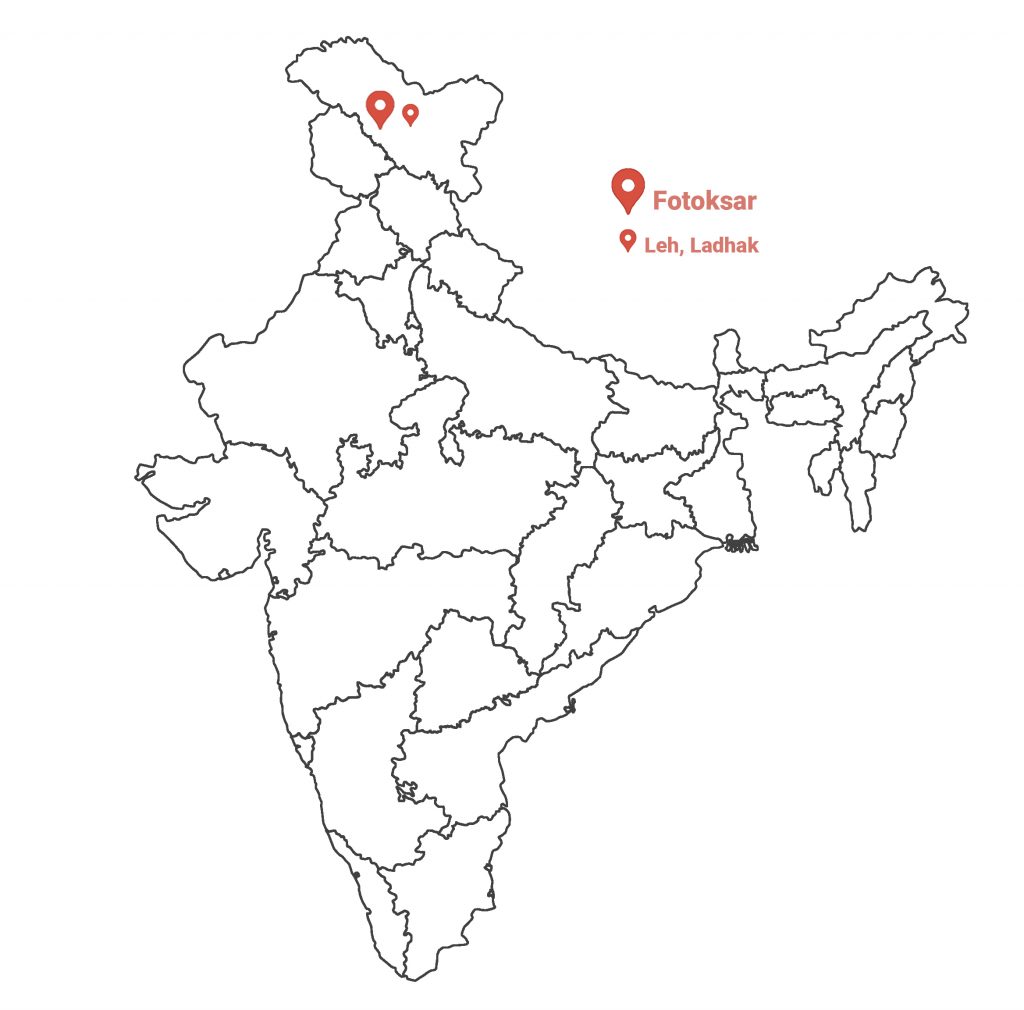
Storyteller : Tashi Dolma, Himal Prakriti Fellow
Fotoksar Village, Leh, Ladakh
Read this story in Hindi
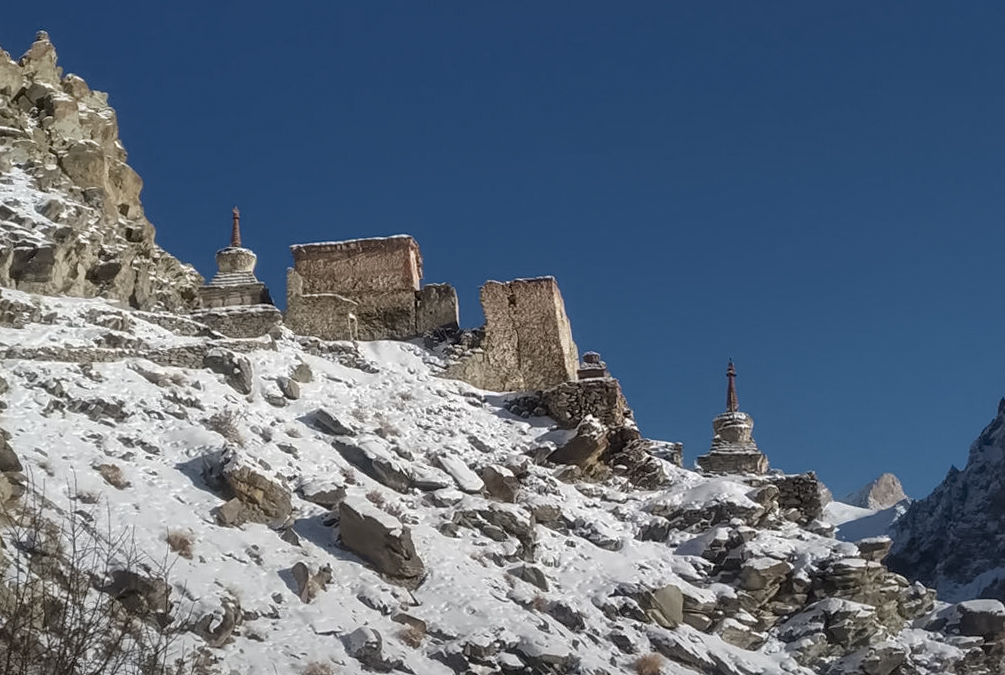
The Fotoksar Ningpa (old) Gonpa (monastery) in the Dalthong Kha area built at an altitude of about 13600 feet is a Buddhist monastery in Leh district, Ladakh, India. It is located in the Khaltsi Block and is about 165 km away from Leh connected via the new road that comes from Alchi, Khaltsi, Wanla, then crossing the 15,620 feet Sil Sil La (pass) to reach our village Fotoksar at 13003 feet. This beautiful small Ningpa Gonpa or old gonpa on the top of the mountain above our village has different shaped spectacular rocky outcrop on all four sides. One of them is named Gonboo Charok Dong (shaped like a bird head) that is located in front of the gonpa.
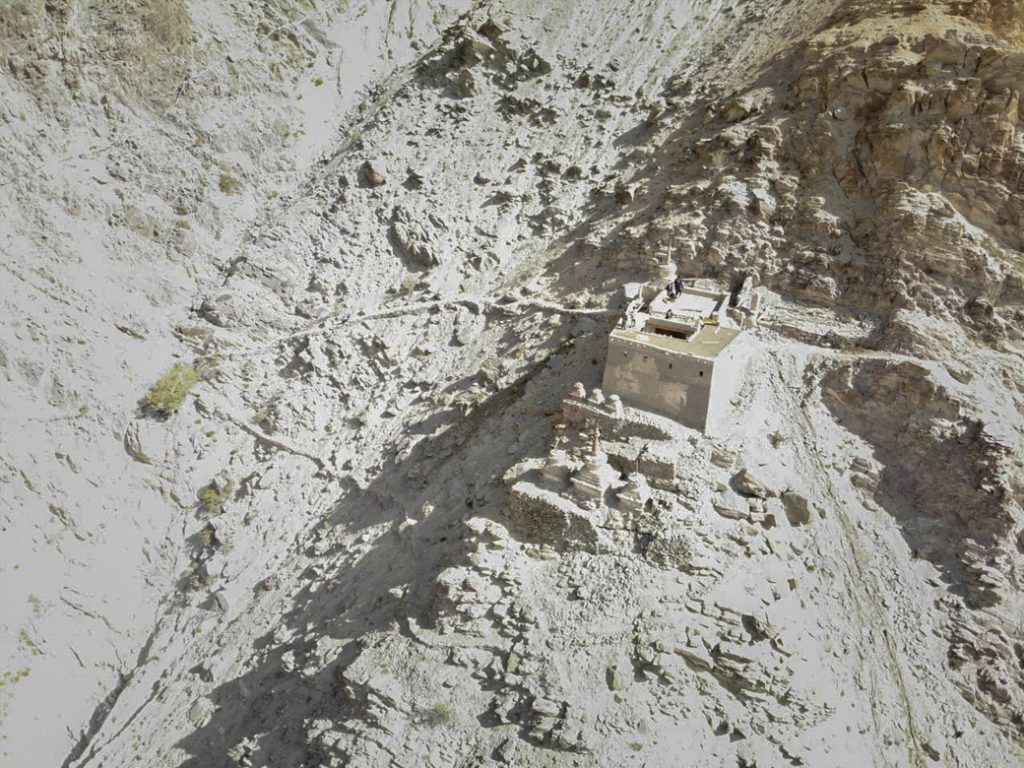
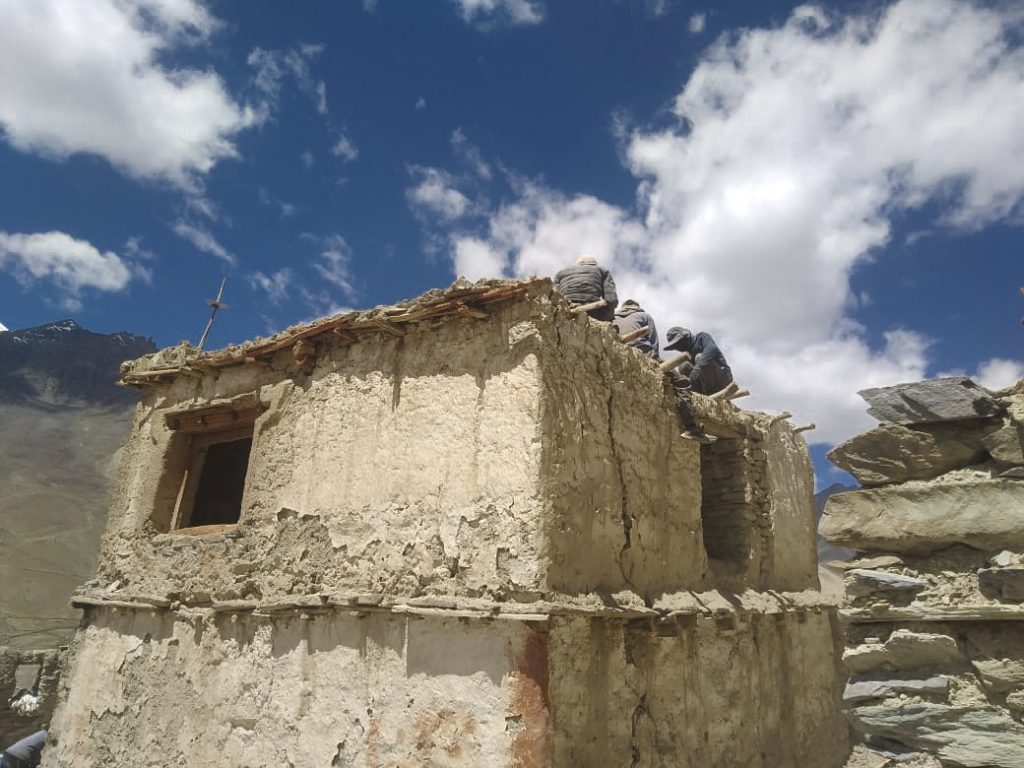
The Ningpa Gonpa (old Gonpa) in Fotoksar was built in the 17th century during the time of King Punchok Namgail along with Leh Kalon (adviser to king) Sonam Targais and Stock Kalon Kunkhab Tashi. At that time the head Khomnir (Lama) Lobon (head guru) was Rongdo Tsewang who said that a small gonpa had to be built here and accordingly the king and all the villagers obeyed his request. This Ningpa Gonpa is at top of our village. It took great effort by the people to build it along with the builder Druwang Konchok Choswang Lundup. Chomo (Buddhist nun) Tashi Palzom and Chomo Dorjay Palzom and villagers like Tashi Gyalson, Tsering Gana, Sonam Rinchen, Gyalson Tashi, Tashi Tsering and Tsering Lundup put in a lot of hard work to build it. It was difficult to walk up to the Ningpa Gonpa because there was no road to reach it.
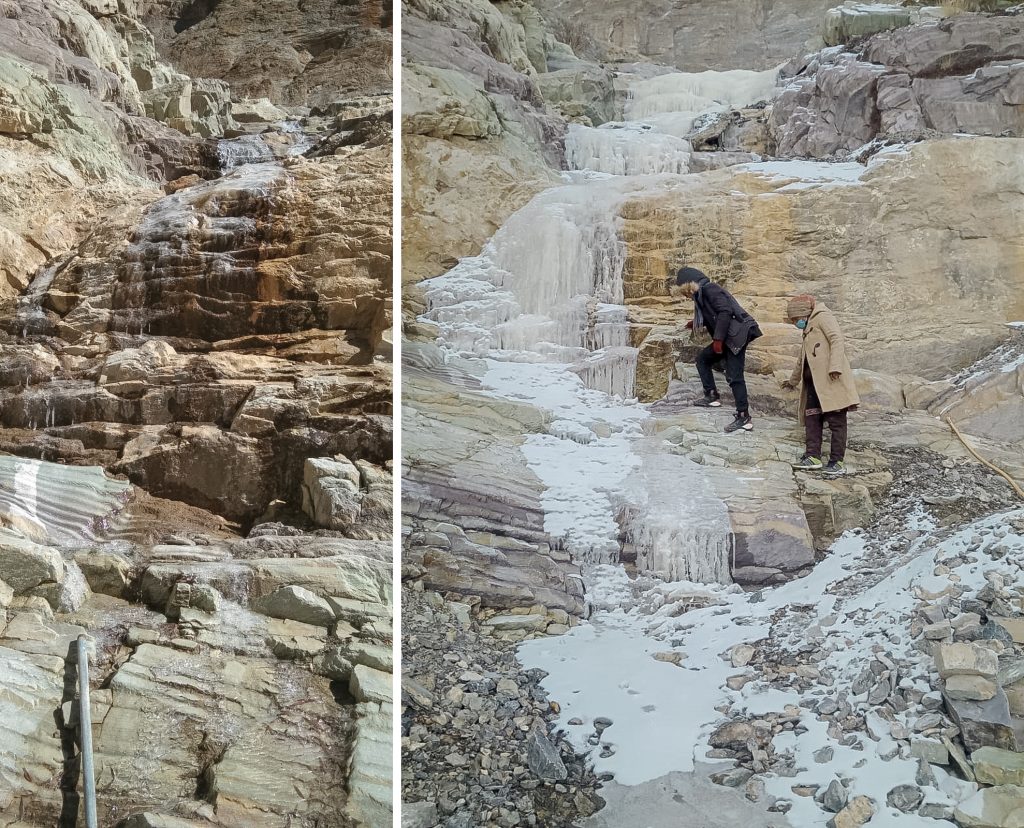
It was particularly difficult to reach Ningpa Gonpa during the winter. There is a stream of spring water that flows over the rocks on the path to the Ningpa Gonpa. This would freeze in the winter and people had a lots of difficulty in crossing it and reaching the Gonpa.

In those days, our festival Youm was held there once a year. All the villagers, as well as the mothers would carry their children in baskets, and climb the entire mountain to reach the top. The prayers would go on for four to five days, with traditional dances and everyone would enjoy themselves.
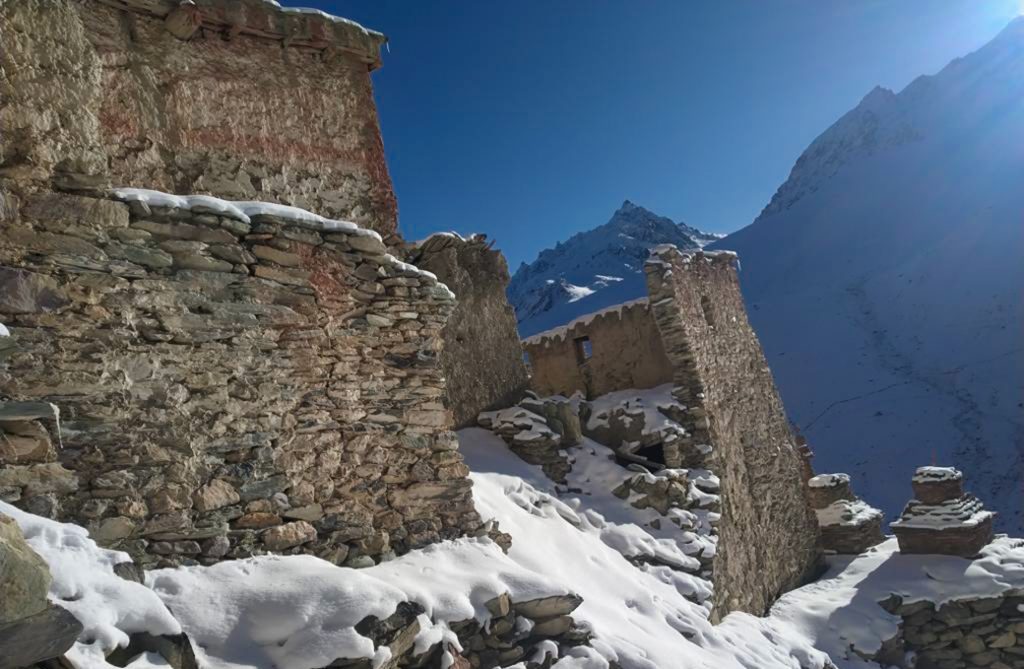
But as there was only a footpath and the way was not clear, the villagers and the khomnir (lama) would face many problems to offer prayers and puja, as it was very difficult to go to light the chotma (lamp) and have darshan (take blessings) at the Ningpa Gonpa. In winter, when there was snowfall and the way would get closed, the snow had to be cleared and the khomnir would suffer the cold in his hands and feet.
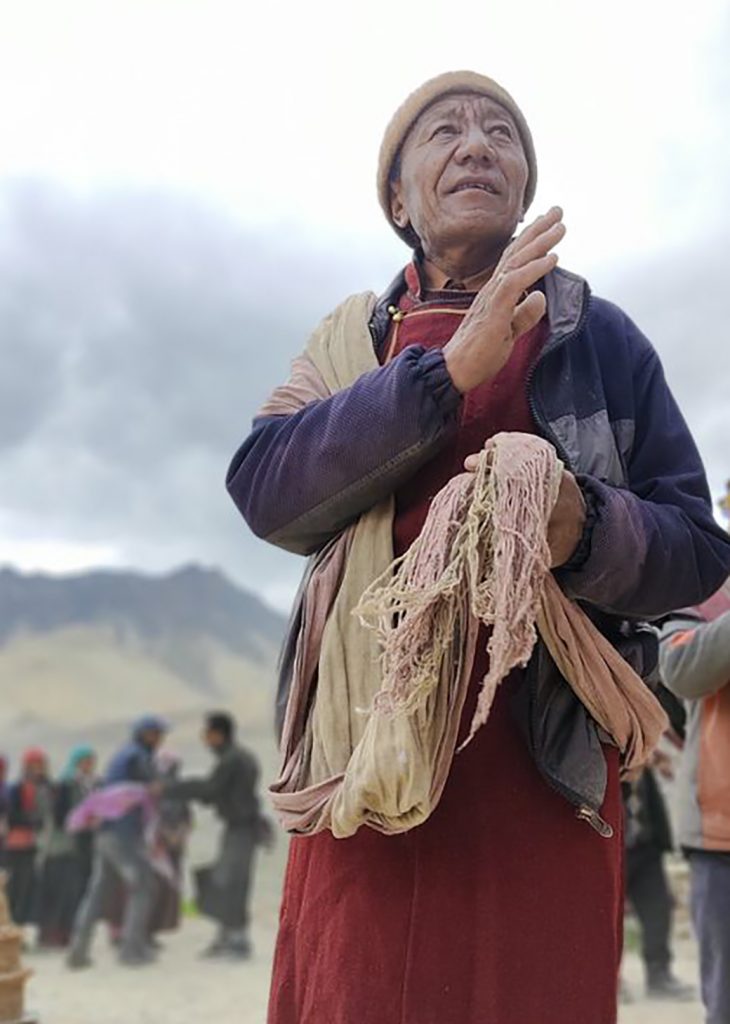
Once a lama fell on the way to the Ningpa Gonpa. As the khomnir were facing many problems, they requested Skabjay His Excellency (H.E.) Togldan Rimpochey that this was not a good place for the monastery and that there were many problems for them to do their duty on top of the mountain, especially in the winters. H.E Togdan Rinpochey accept the khomnir’s request.
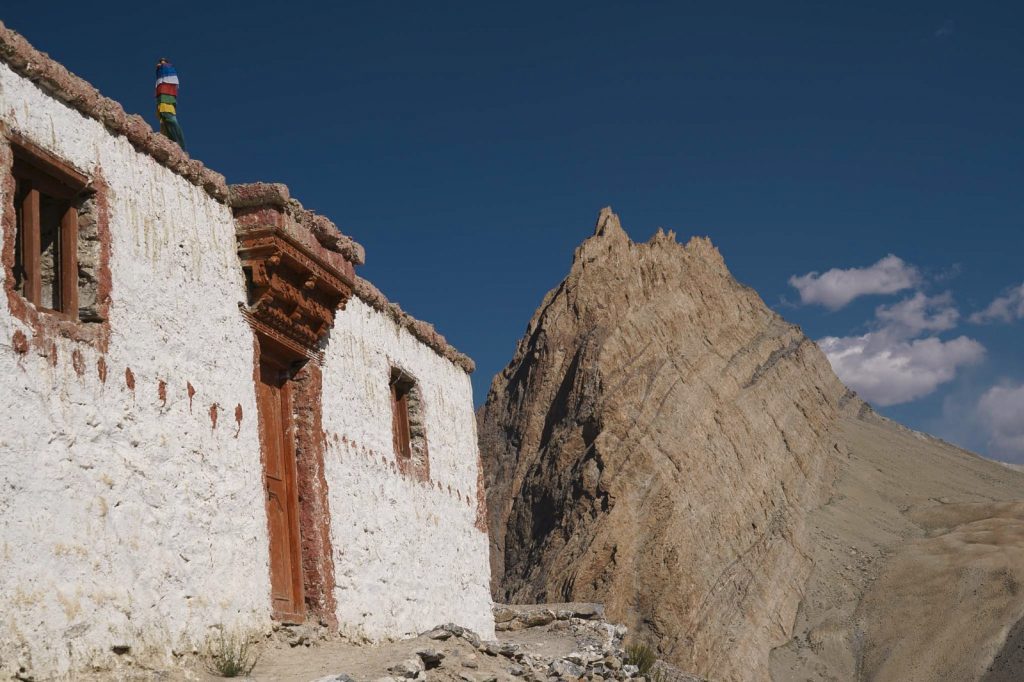

In Yuslo (1974) all the statues, stupas and handmade thankha (paintings), all the logs and bricks were taken down to our village Fotoksar. It took two to three years to build the new gonpa and to place all the stupas and statues in it at its new site at Shakma Ringmo, just above our village. This made it easier for the khomnir to offer prayers at the new gonpa. The villagers held a cultural reception to thank H.E Togdan Rinpochey, who is a great Lama in Ladakh, for accepting the khomnir’s request.
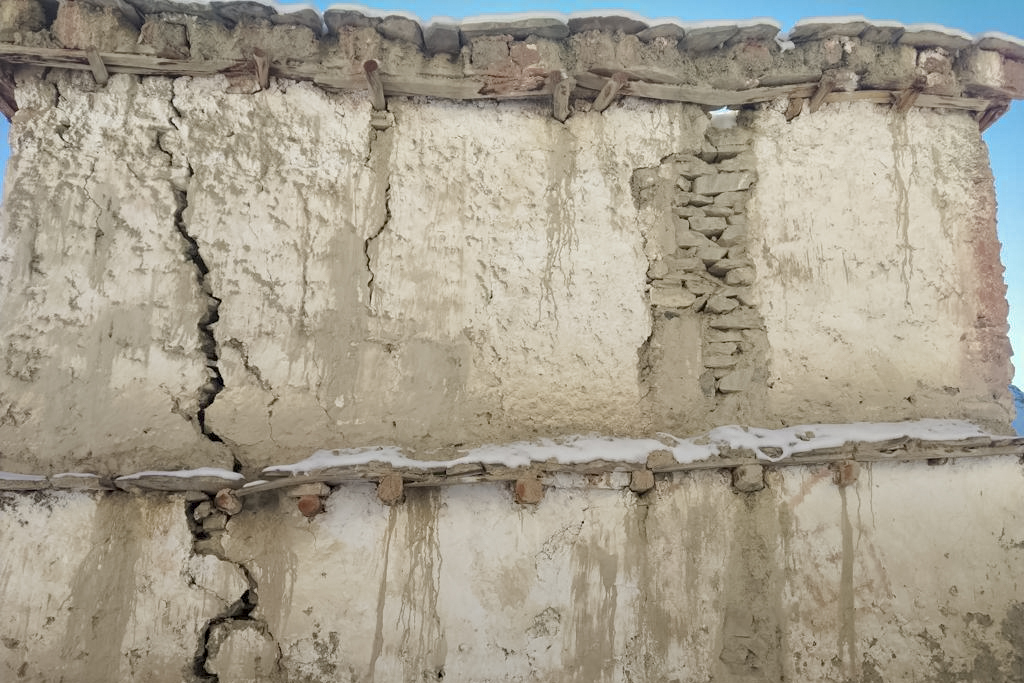
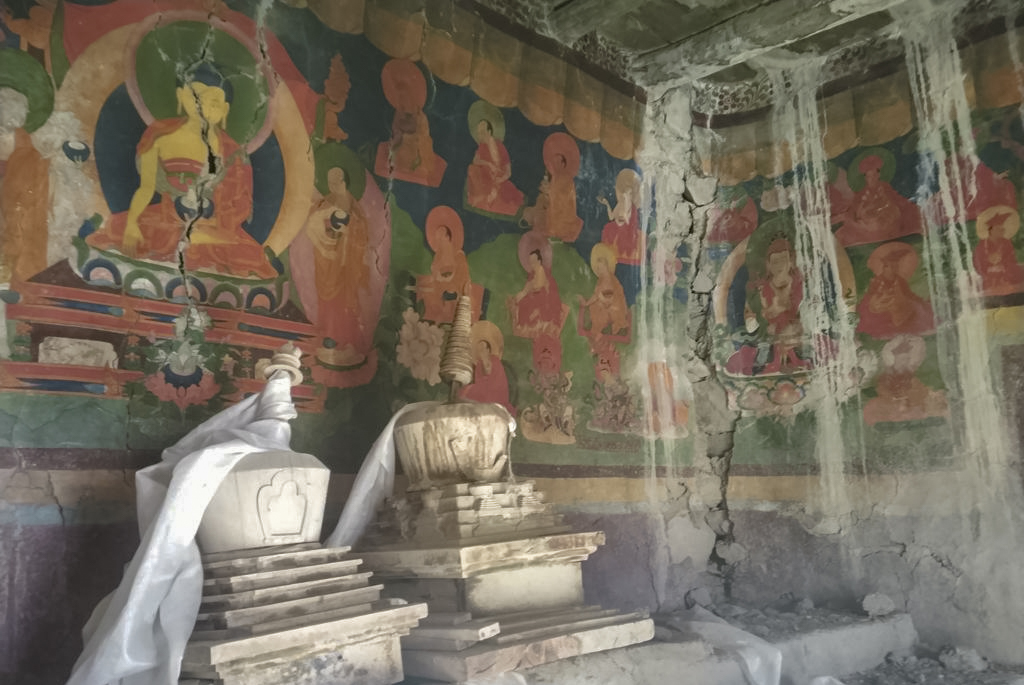
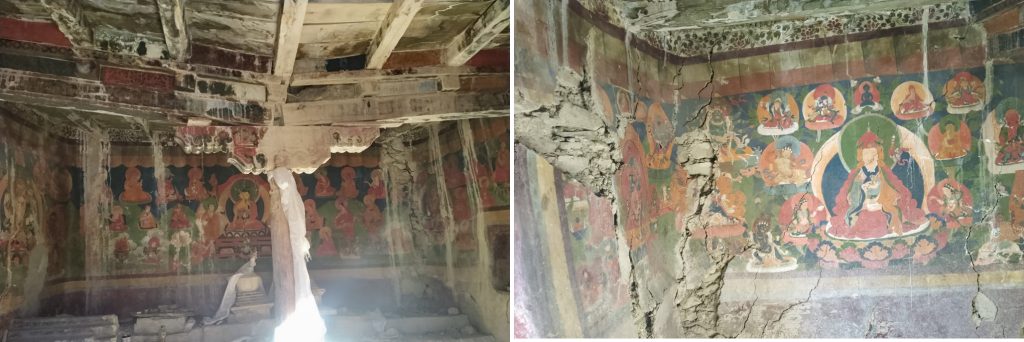
But in the 48-49 years since then, the Ningpa Gonpa (old gonpa) slowly fell to ruin because of neglect by the villagers and the khomnir. The windows and doors, the logs, bricks, pillars and the wall painting inside, and the outside walls were badly affected. The snowfall and the rain water would come through the roof into the gonpa and damaged the wall paintings as well as the outside walls.
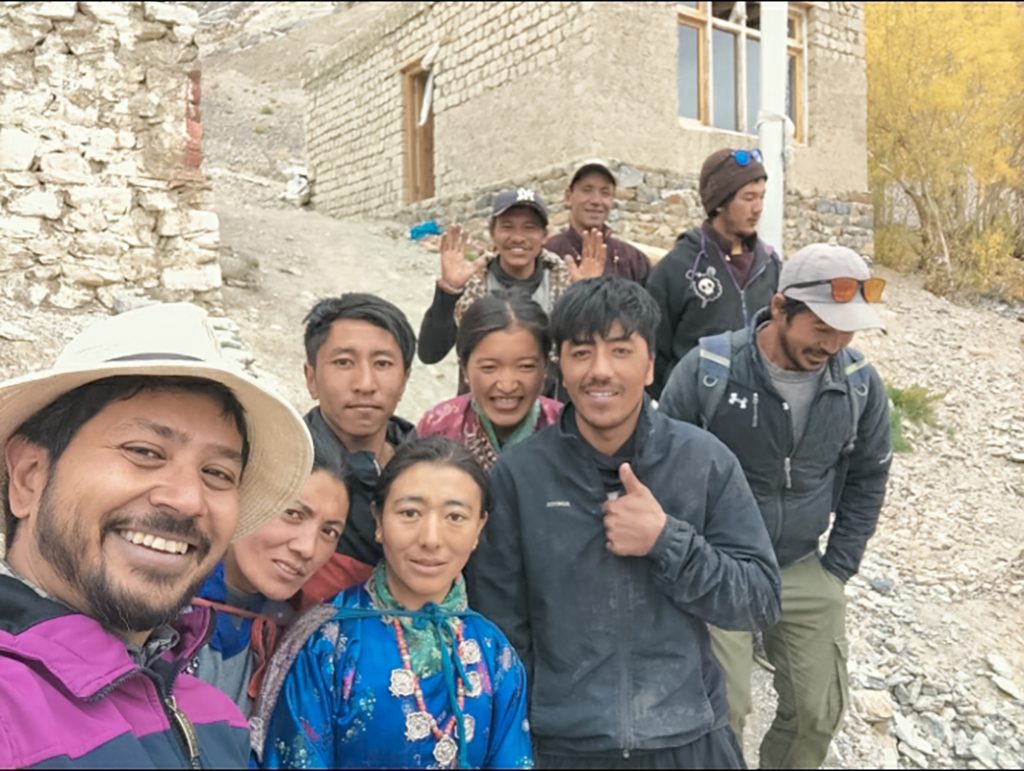
In 2019, as part of a group of youth from Fotoksar, we visited the Ningpa Gonpa (old gonpa) and found that there was no way to go inside as it was full of soil and rocks and very dangerous to enter. We held a discussion about the state of the old gonpa and decided that this is our gonpa and that it is an example of our faith, our lifestyle and is the future of our children. It is our heritage and that if we united to renovate it, we could succeed. In June 2019, we, the Thungkar Lothun Tsogspa (Youth Association of Fotoksar) decided to begin its repair and renovation work. After that, we and Achi Association (renovation artists from Leh) got together to rebuild and renovate our Ningpa Gonpa
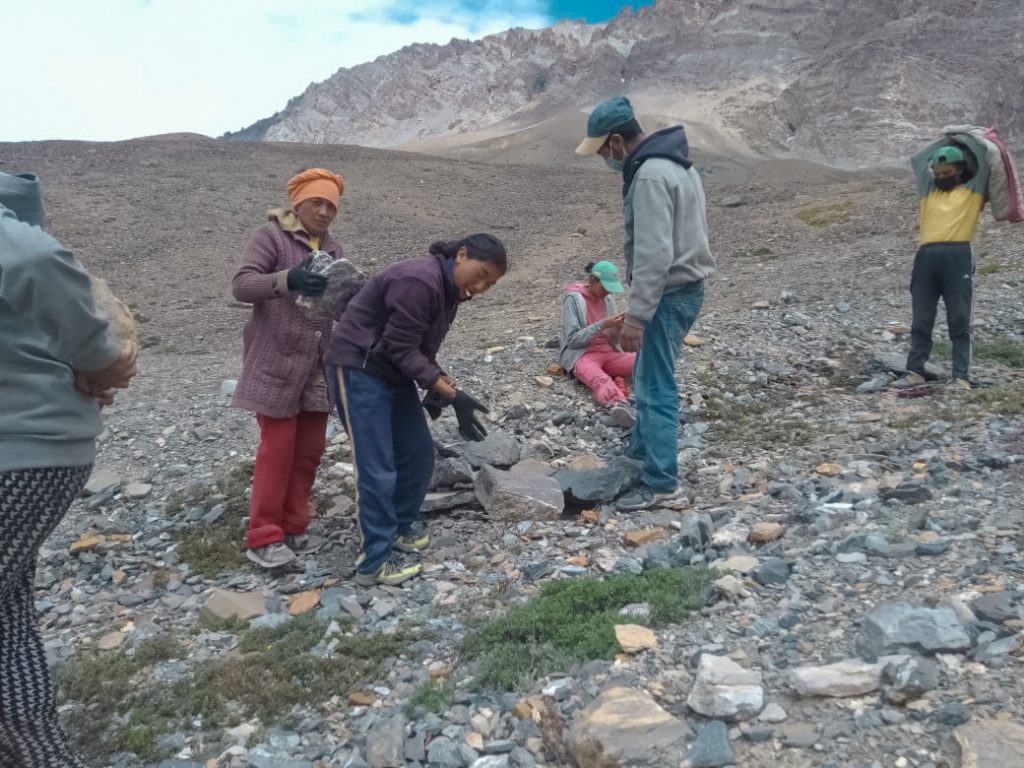
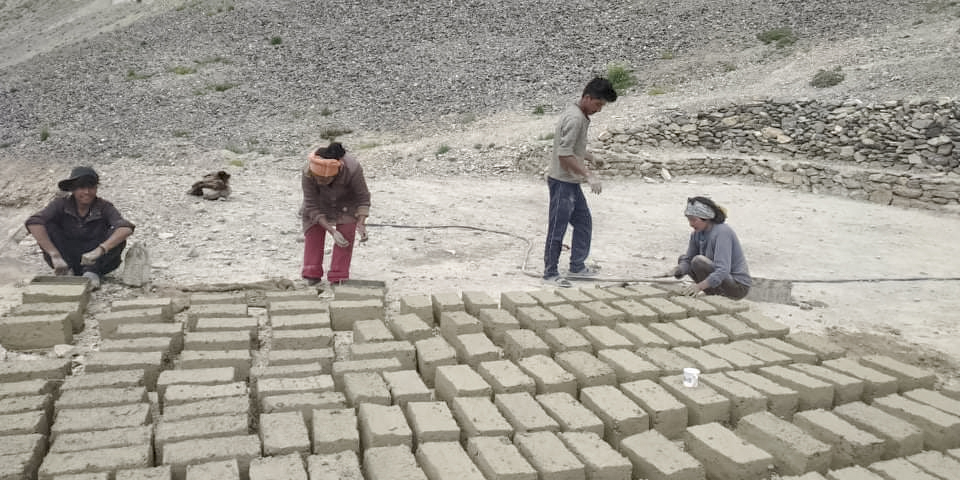
We first collected stones to make the pakbo (cement blocks). Water was brought from the top of the mountain in pipes. Donkeys carried the pakbo from bottom of the mountain at our village, to top of the mountain where the Ningpa Gonpa was being renovated.
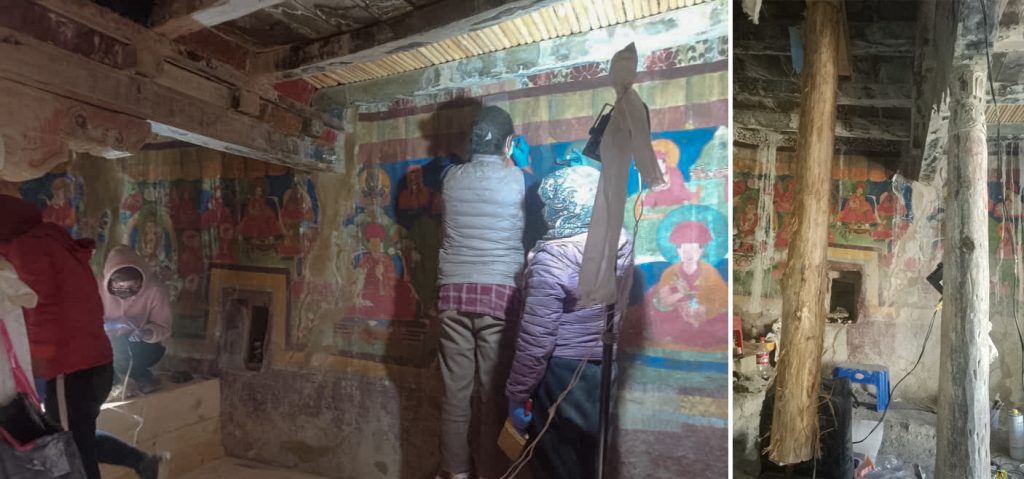
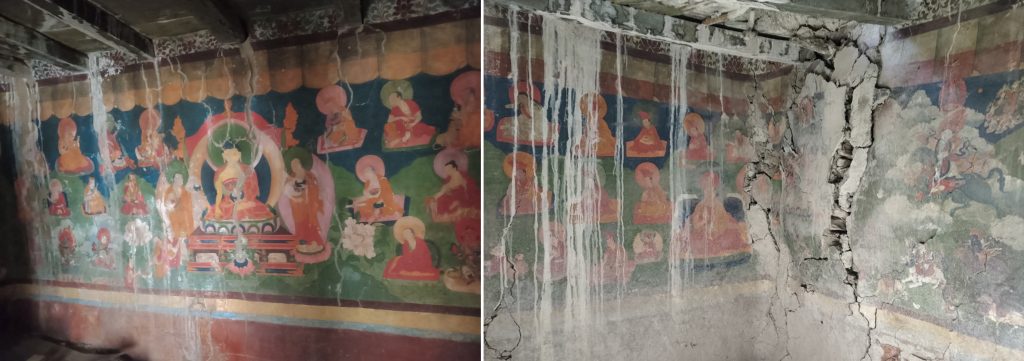
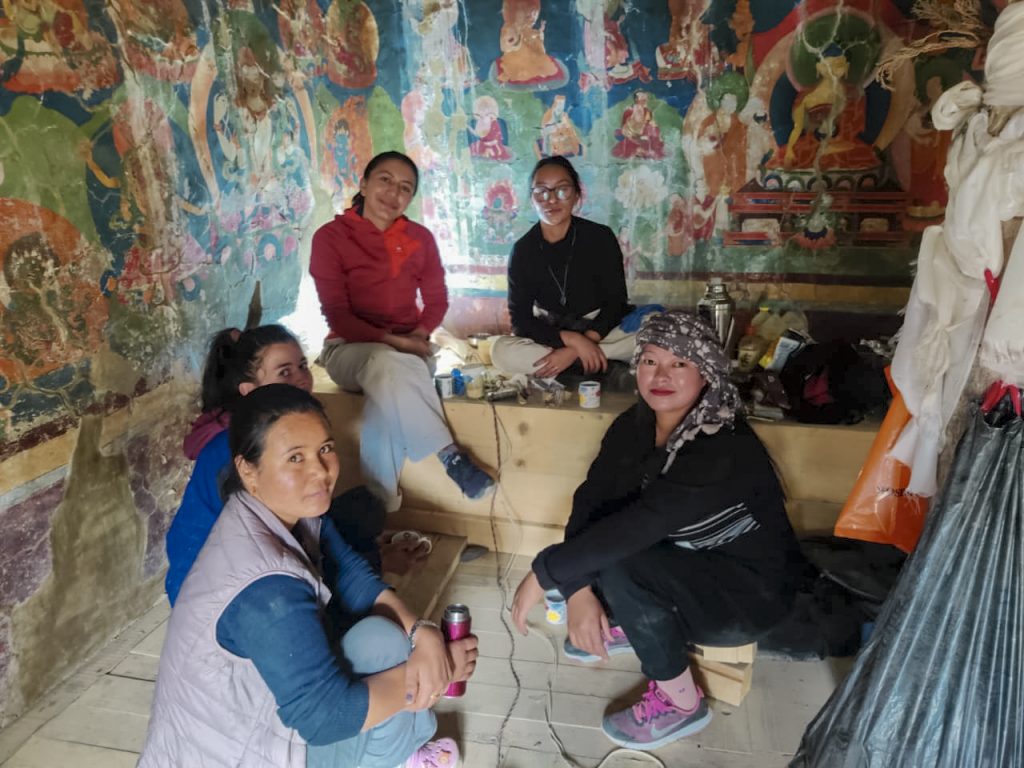
The inside wall paintings were redone by the volunteers of the Achi Association, while we did the work outside. We rebuilt the old gonpa with the help of our villagers, enduring great difficulties. The youth of Fotoksar worked day and night.
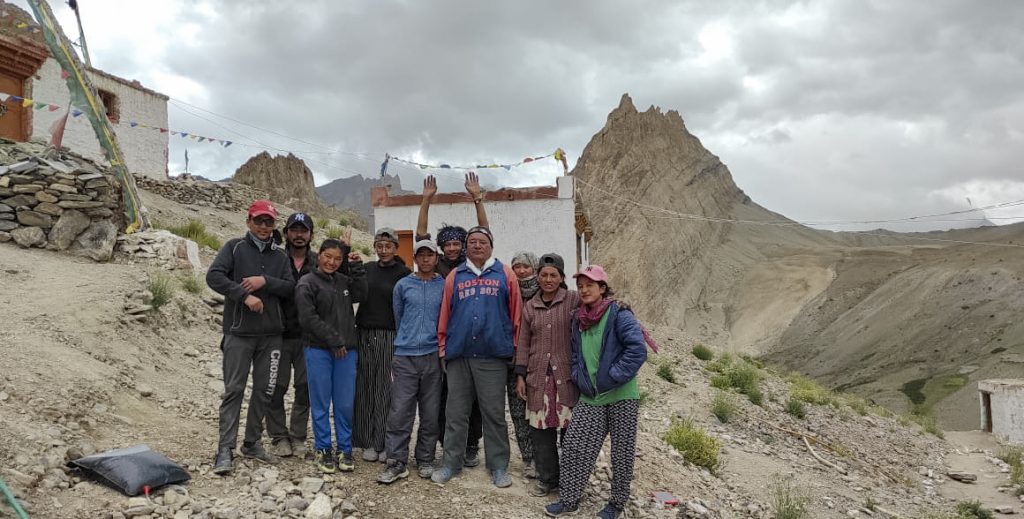
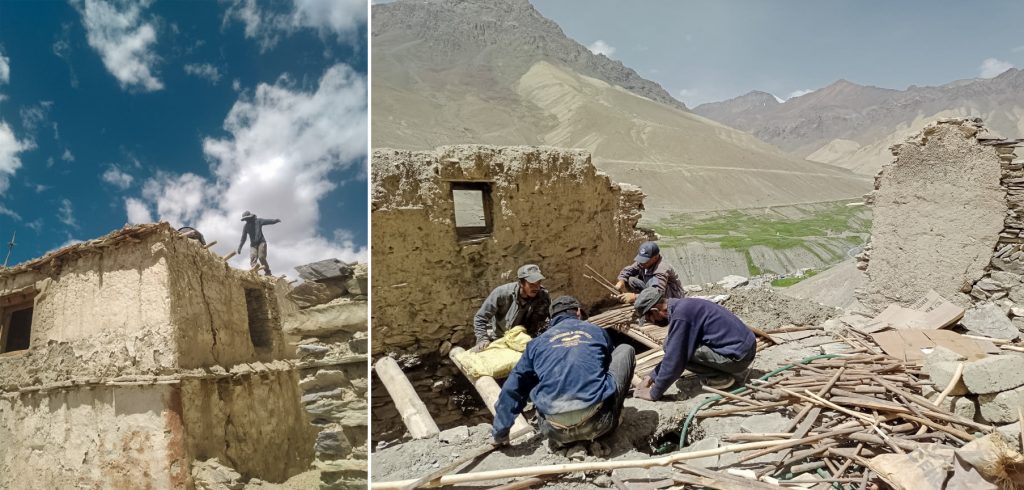

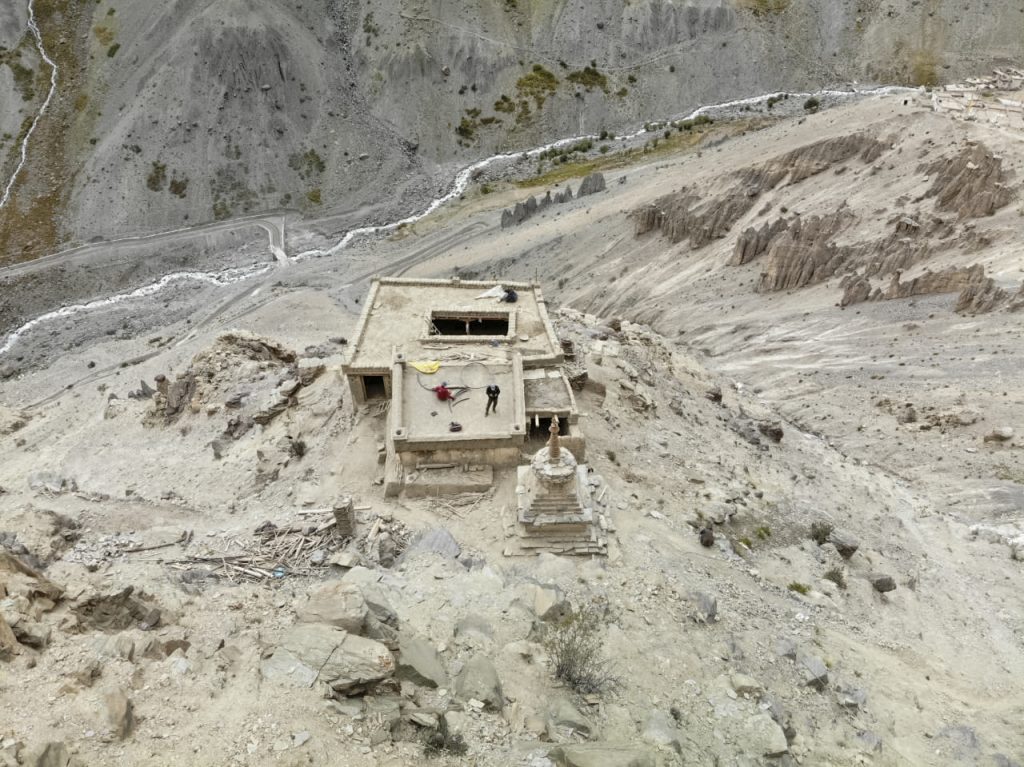
The head mason was local man and 4 to 5 villager would come turn by turn to work with him. It made us wonder- what difficulties had the people faced in the old times faced to build this Ningpa Gonpa.

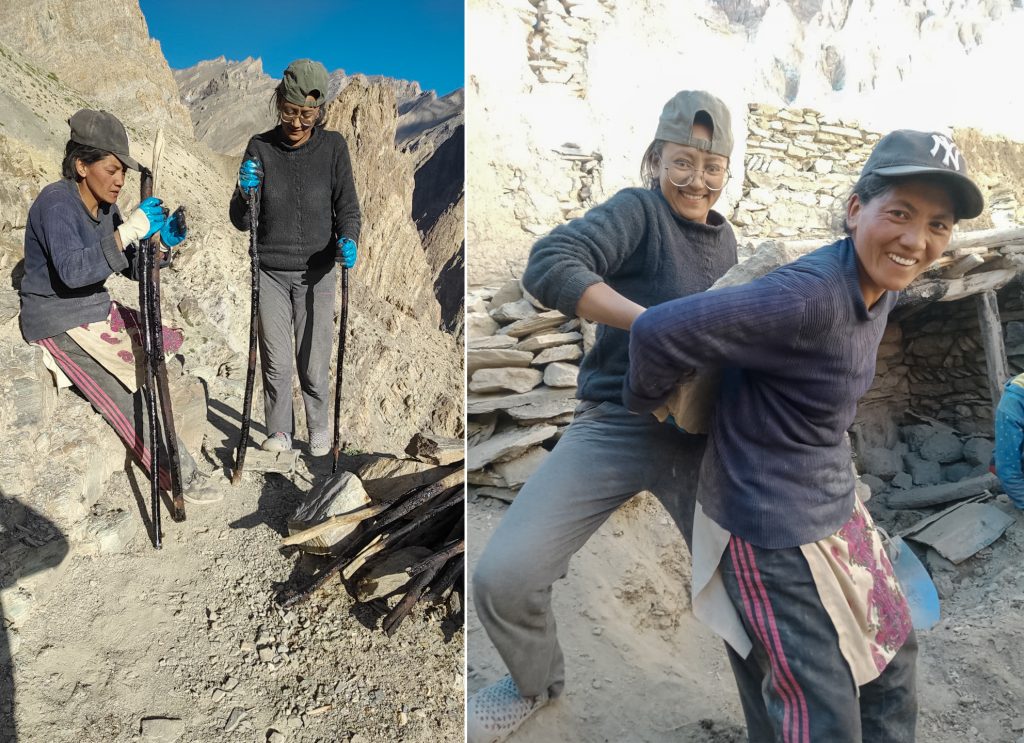
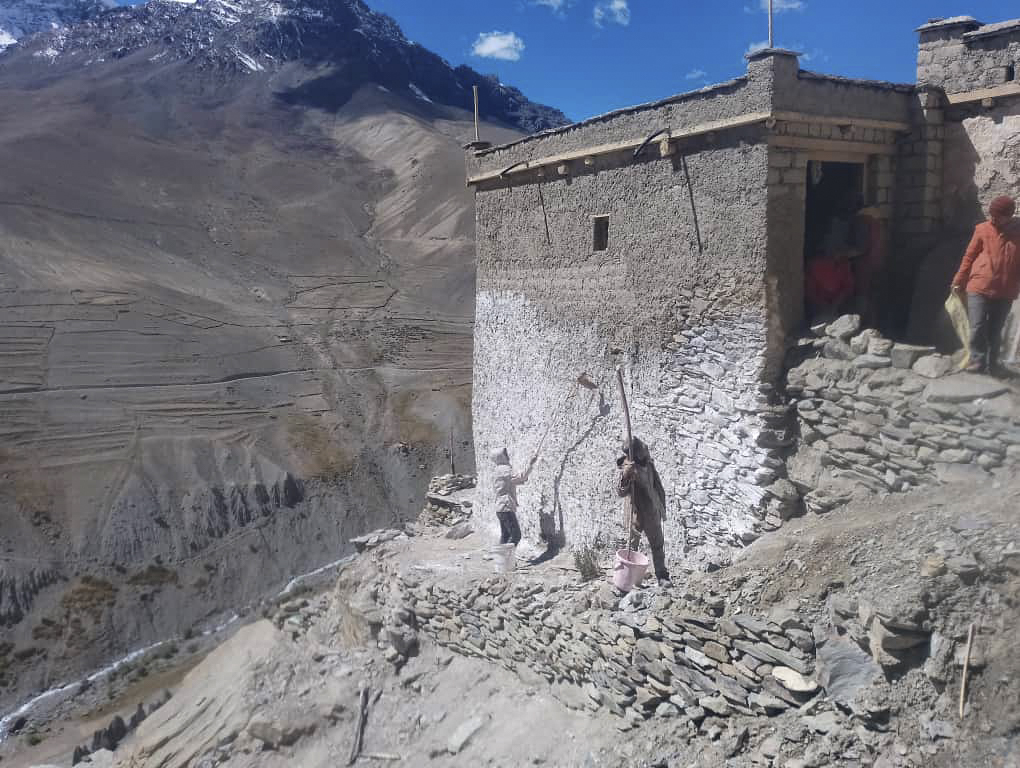
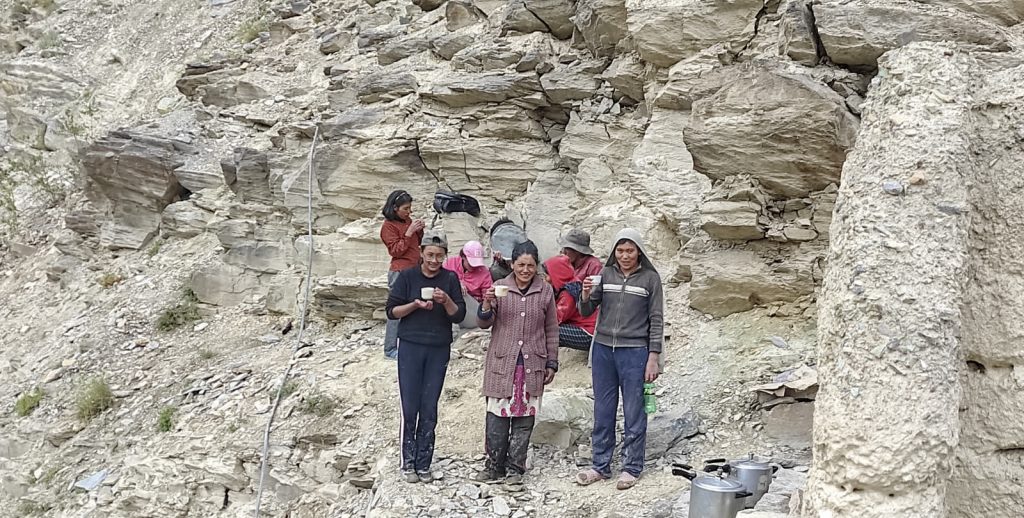
The 22 members of our Thungkar Luthon Tsogspa worked hard day and night and villagers helped us a lot, as without their help it would have been impossible for us to complete the work.

We also had to provide food to those who come to work to renovate the Ningpa Gonpa. We had to prepare food at the village and take it in baskets to the top where the work was being done. The villagers donated rice and vegetables for the people working on the restoration of the old Gonpa.We would make dinner for the youth and workers and carry the all the food up ourselves. It was so heavy that we had difficulty reaching the top.

The youth of Fotoksar made a good footpath to the old Gonpa. We would have the logs, pillar, windows and doors and the bricks or soil carried by the Bungboo (donkeys) to the renovation site.

When it was harvesting time in our village, we would work through the night from 3 am to 2 pm next afternoon. At night there was no light so we used generators to make light. By working day and night we completed the renovation nearabout June 2023.

The Korean Lama Stanzin Choskyab sponsored the installation of a Stupa in Ningpa Gonpa after the renovation was completed. Our villagers said thank you from their heart as they were happy that they could once again visit their Ningpa Gonpa.
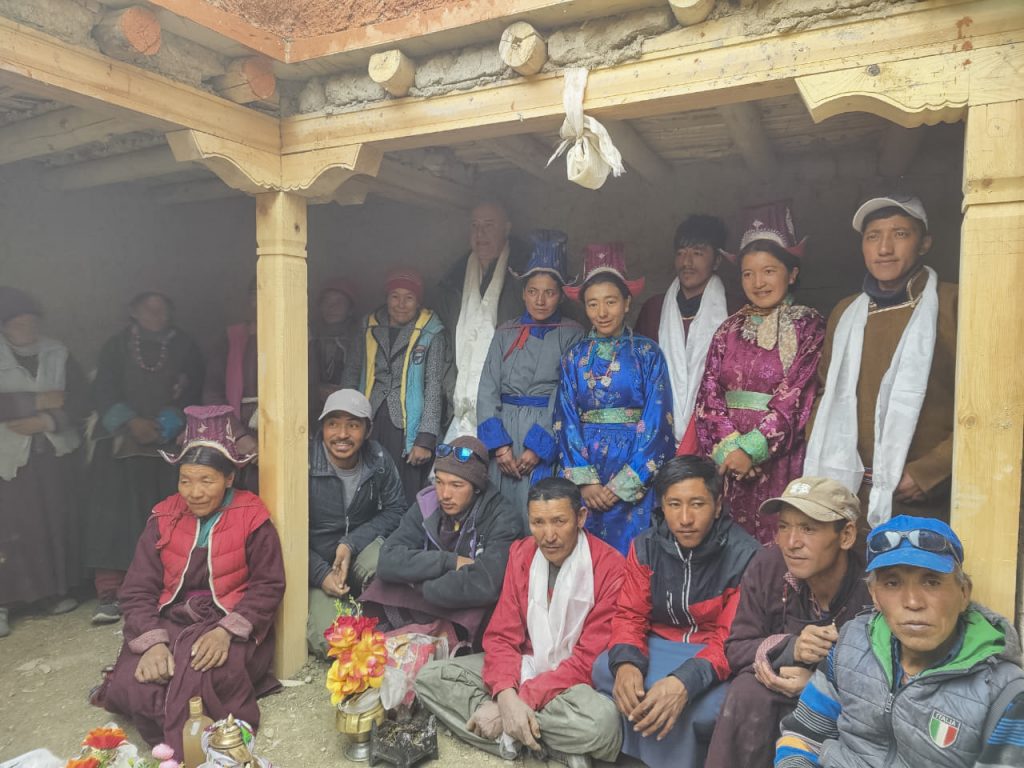
Meet the storyteller





